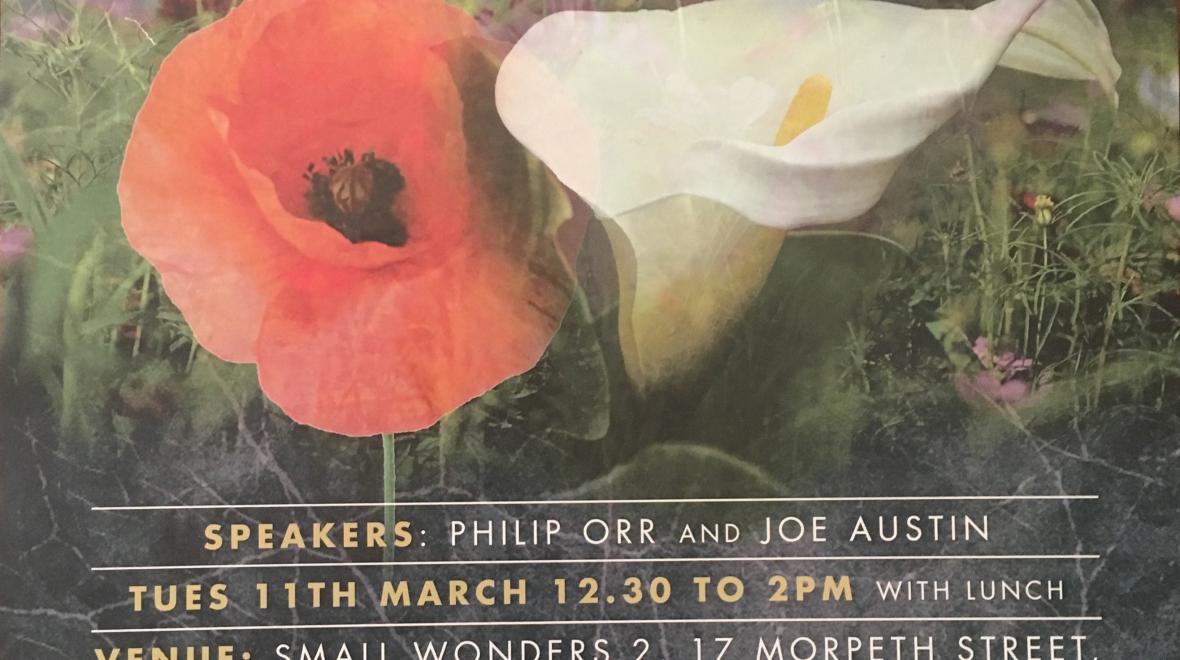The Poppy and the Lily

During the centennial years, from 2014 through to 2018, a project named The Poppy and the Lily has been delivered at a wide range of venues. At its core is the desire to enable people to learn more about the origins and purpose of two of the most significant commemorative symbols in our divided society. We also wish to provide an environment in which frank conversation can take place and an often difficult subject can be addressed without rancour.
The format is simple. Each of us delivers a short talk, sometimes accompanied by slides. Philip speaks about the Poppy and Joe talks about the Easter Lily – and why we wear one flower and not the other. Then we are open for comments and questions from the floor – this for us is a crucial part of the event as everyone with an opinion or a query must get a fair chance to speak and be heard.
We have lost count of the number of engagements we have undertaken on both sides of the Irish border, ranging from Orange Halls to Republican Clubs. We have delivered the event in rural and urban environments, in museums and churches and community centres. We have worked in Belfast and Dublin, on the Shankill and the Falls and we have spoken to school-children and adults, in both mixed and single-identity contexts. We would aim to continue with the project, if we are asked so to do.
What worked well and what, if anything, didn't?
The stories that emerge from both Joe and Philip often surprise the hearers. People are intrigued to learn of the early role of women in devising each of these floral emblems. They are also interested in the variety of poppies and Easer lilies that exist.
The two talks often prompt questions such as – Is the Poppy /Lily a political symbol as well as a commemorative one? In wearing the Poppy/Llily are you justifying everything that has been done by the British Army/Irish Republicans? Do you wear your chosen flower for one or two days only or for a few weeks at a time? And could someone, someday actually wear both of these symbols in their lapel? With young people, we have found it useful to think of the range of logos and brands which form part of their everyday symbolic repertoire.
What has been very clear throughout this project is that hostility towards a commemorative symbol can end up being transformed into curiosity about its genealogy and its meaning. No one leaves an event politically realigned but they do leave better informed and often with a hunger to find out more.
Further Information
Philip Orr, philipthomasorr@gmail.com


